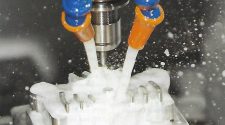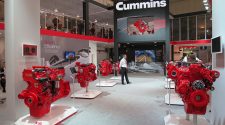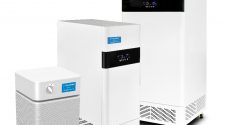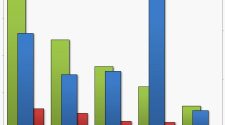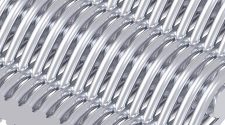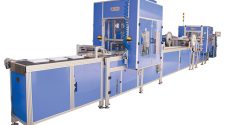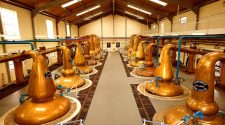Benefits of New Nanofiber Technology Keep the Industry Progressive
At the recent Filtrex 2022 conference organized by EDANA (the European Disposables and Nonwovens Association) and held in Berlin from November 8-9, Joshua Manasco, director of business and application development for Elmarco introduced the company’s new Infinity nanofiber technology.
The free-surface technology utilizes a spinning solution delivery method that produces continuous jets, effectively eliminating critical membrane defects, to enable the production of high-performance nanofiber membranes for use in HEPA and liquid filtration.
“If you look around at all the technology that’s rapidly advancing today, whether it be green energy, or pharmaceuticals and whether it’s the clean air or water that we need – all of these things require advanced membranes and separation layers,” Manasco said. “A lot of people don’t think of that, but our customers certainly do, and they come to us to help solve those issues and provide those membrane solutions. They also know that within the next five years we should see a 17% CAGR for nanofibers. The Infinity line is the key to unlocking some of those applications that our customers need and helping to solve their issues and provide them with solutions with nanofibers for advanced membranes and separators.”
Categories
Applications for the Infinity line, he added, can be broken down into three categories – high-end air filtration, liquid filtration and separators.
“When we think about high-end HEPA and ULPA air filters, they can be applied in the pharmaceuticals industry, they can be used for semiconductor manufacturing and even for improving indoor air quality and they cannot afford to have any issues with defects or allow any contamination through,” Manasco said. “The same thing applies for liquid filtration which can be in pharmaceuticals as well, where you want to make sure you separate what you want from what you don’t want.
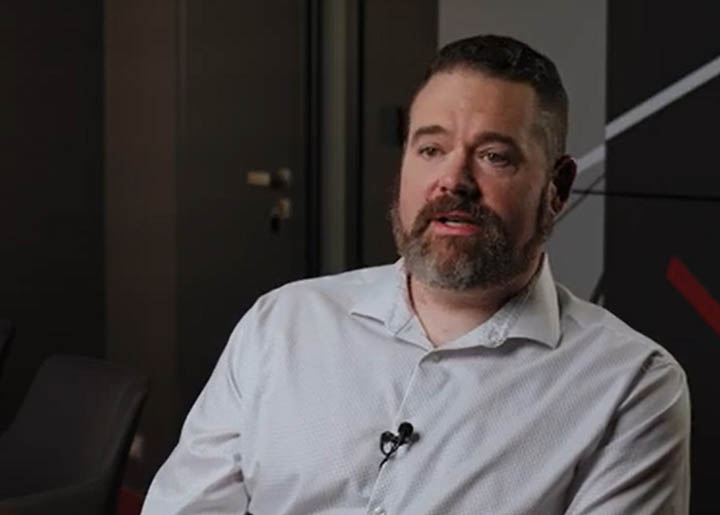
“And then if you think about separators, you’re looking at cell phones, computers and electric vehicles – all of which are very important applications. If you have a failure in the membrane then that can even cause a fire, as people have seen in the past. Defect-free materials in those applications are a must.”
The Infinity process delivers a way to make little-to-no defects in the membranes in such stringent applications.
It takes advantage of Elmarco’s Nanospider free surface electrospinning technology that can already deliver high throughput and homogeneous webs at industrial scale, but in a different way. On Infinity lines, the jets are not interrupted during the spinning process.
“What that does is prevents defects from being formed in the membrane and that allows the membranes to be used in such applications that can’t afford to have defects,” Manasco said.
Nanospider
The Czech Republic has led the field in the development of nanofiber-based materials for many years.
From their origins as filters for Russian gas masks in World War II, electrospun nanofibers came to be widely explored in laboratories around the world as their full potential came to be realized with the advent of the scanning tunnelling microscope at the start of the 1980s.
The drive to perfect the high-speed, industrial manufacturing of nanofiber nonwovens remains ongoing, but Elmarco, headquartered in Liberec, Czech Republic, remains a front runner in the field.
Its needle-free Nanospider technology differs from conventional electrospinning in which jets are emitted from spinnerets by achieving the formation of charged polymer jets from a free liquid surface.
In other markets such as performance apparel, for example, it is necessary to develop materials that offer different levels of breathability and water resistivity to meet the diverse range of end-uses and consumer needs. Nanofiber webs can be engineered with the required porous structure from a range of polymers. This, in combination with the high specific surface area, flexibility and low basis weight allows for the optimization of the water resistivity level, air permeability and water vapor transmission rate.
For air filtration, meanwhile, nanofibers provide a high specific surface area and a small, interconnected pore structure. These allow a very low basis weight coating to achieve high filtration efficiencies while maintaining a low pressure drop.
HycuTEC
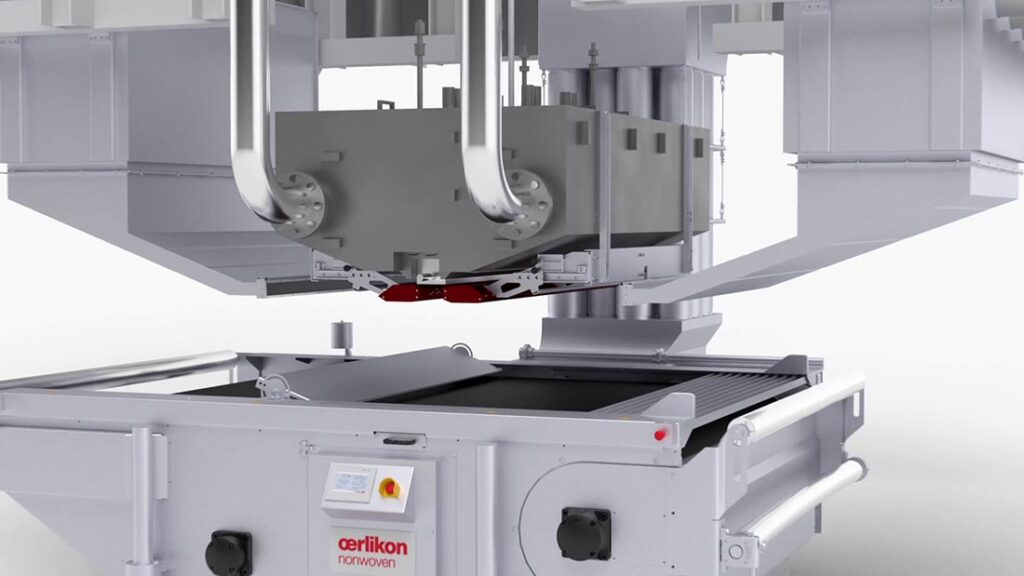
In other notable developments during Filtrex 2022, Oerlikon Nonwoven received the Filtrex Innovation Award for its HycuTEC inline charging technology for meltblown nonwovens.
HycuTEC is described as the market’s first industrially manufactured hydro-charging solution that can also be seamlessly integrated into the production process. It is also easily retrofitted to existing systems as a plug and produce component – a first within the market. This new technology for charging nonwovens is also said to enable the filter efficiency to be increased to more than 99.99%, which, as a result, provides meltblown producers with considerable material savings along with a greater filtration performance.
Whereas classical hydro-charging processes charge the finished nonwoven material the hycuTEC concept is based on the all-round charging of each filament. Through controlled atomization, a charge is evenly transferred to the fibers from the water spray. And a special additive is used to permanently bond the charge to the surface of each fiber. The result is filter media with a uniformly stable charge over the entire cross-section and an effective fiber surface area about 10 times greater than that of surface-charged media.
HycuTEC hydro-charging can therefore reduce the pressure loss in typical FFP2 filter media to less than a quarter. Filtration efficiencies of more than 99.99% are easily achieved in typical filter media of 35 g/m² at 35 Pa, the company says, citing tests at pilot customers manufacturing FFP2 face masks who report confirmed quality increases due to the improved filtration with a simultaneous reduction in material usage of 30%.
For end users, the consequence is noticeably improved comfort resulting from significantly reduced breathing resistance.
Keynotes
Around 100 filtration media professionals gathered in Berlin in November for the Filtrex 2022 program which addressed issues from sustainability to testing and standardization, as well as providing insights on future trends in the health and the automotive industries.
The Copenhagen Institute for Future Studies provided a keynote presentation on the first day of the conference, concerning a proposed move from curative to preventive healthcare. As a result of the COVID-19 pandemic, consumers today are increasingly aware of the quality of the air we breathe, which has a key impact on health. As such, filtration will only continue to grow in importance, as society looks to improve living and working conditions to ensure healthy lifestyles. Several of the speakers addressed this by showcasing product developments in filter media that can be used in domestic and institutional building filtration systems.
Euromonitor gave the keynote on the second day, addressing the rate of transition to electrically powered vehicles. This is extremely relevant for the filter media industry, given the different nature of filters used in traditional combustion engines compared to electric ones. Despite many challenges that slowed down the roll-out of electric vehicles, such as cost and infrastructure for charging, a recent Euromonitor study predicts that by 2031, 50% of new passenger car registrations will be electric globally.


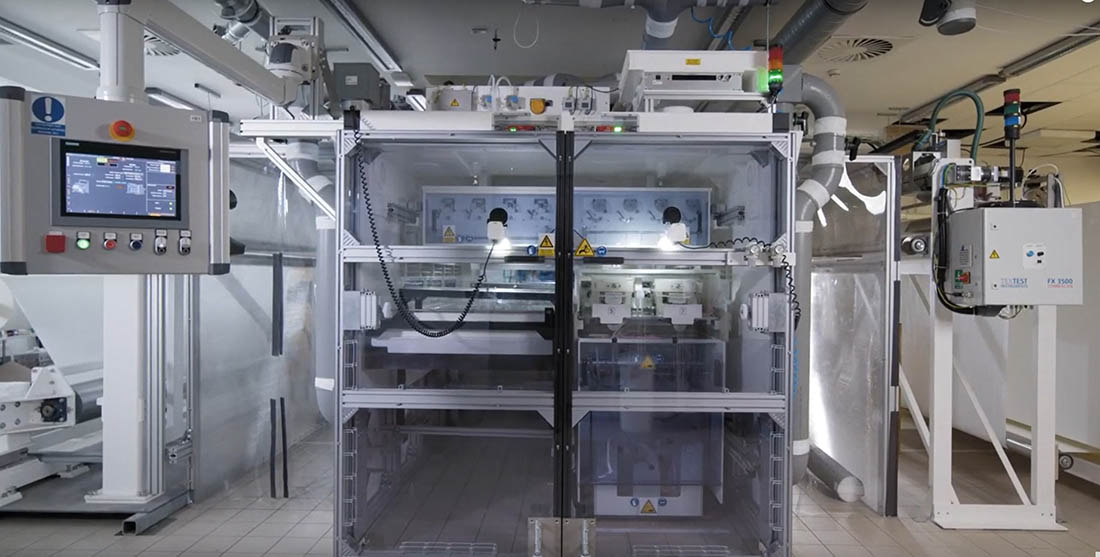
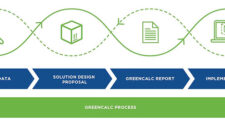
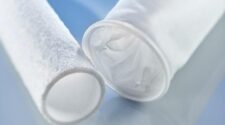
![Figure 1: Heat Exchanger Proventics GMBH.[22]](https://www.filtnews.com/wp-content/uploads/IFN_2_2024_crimpedmicrofiberyarns_Fig.-1-Heat-exchanger-225x125.jpg)
